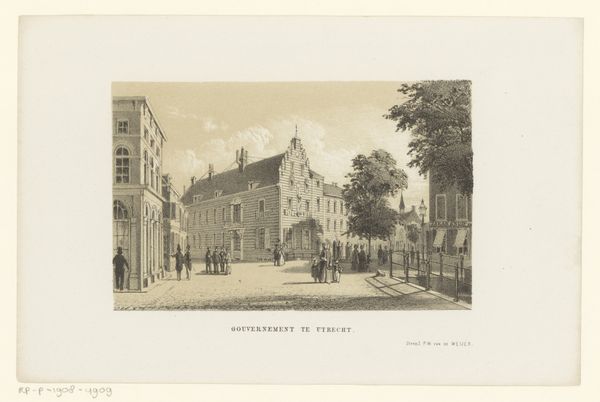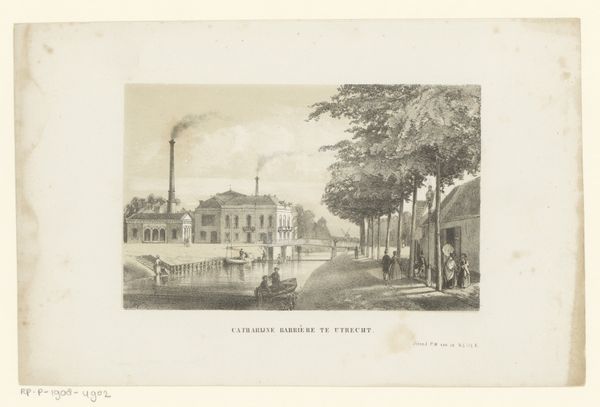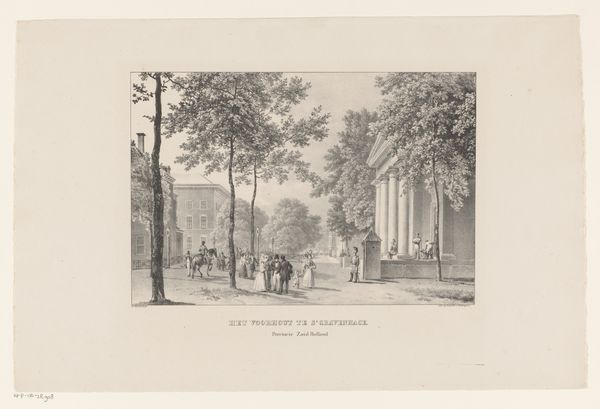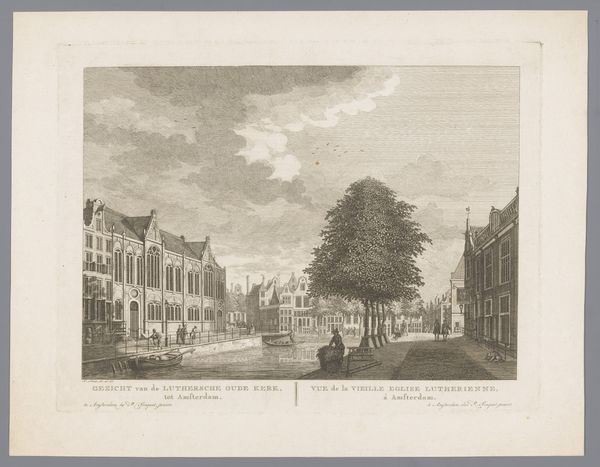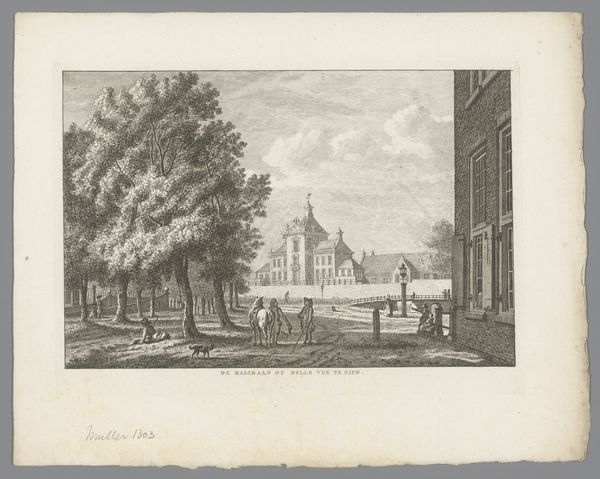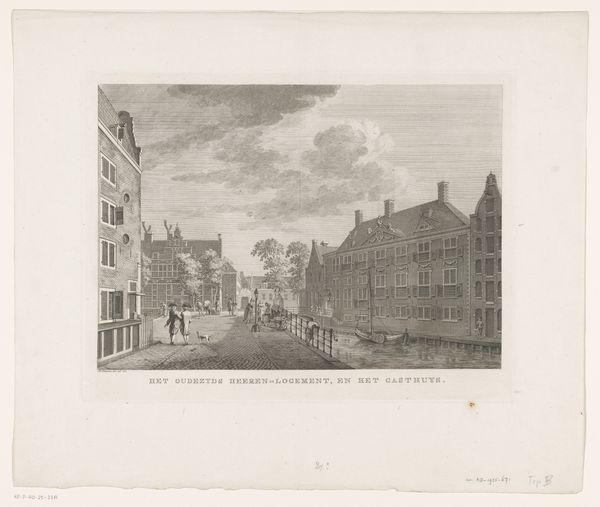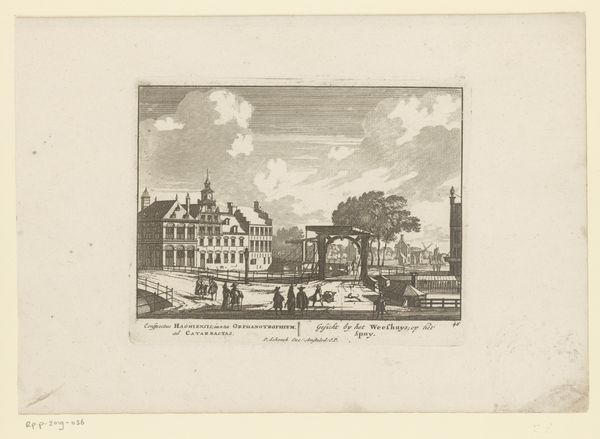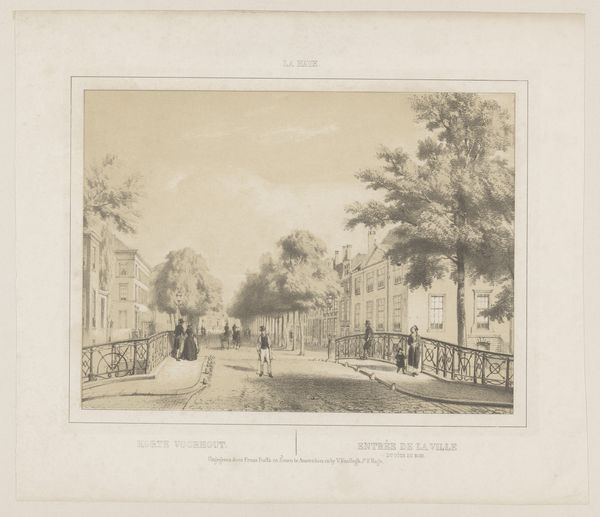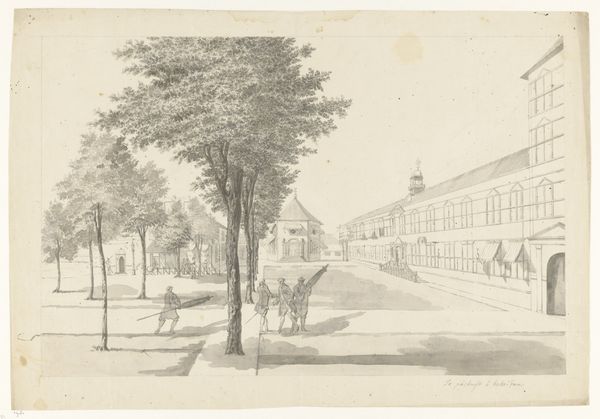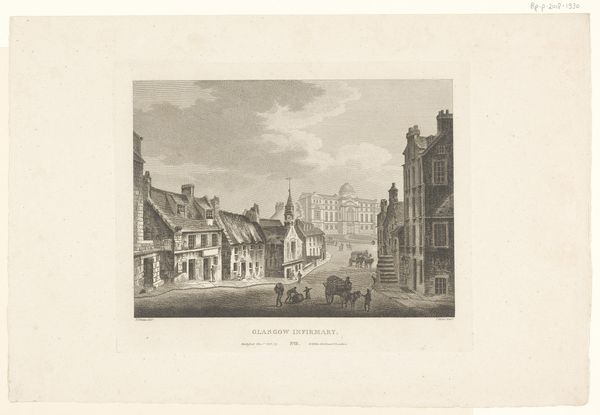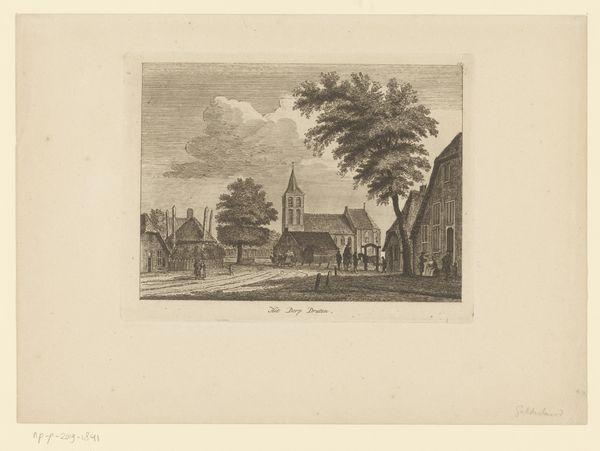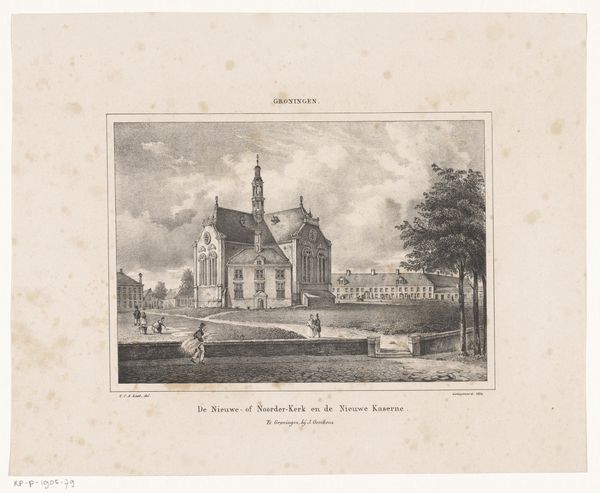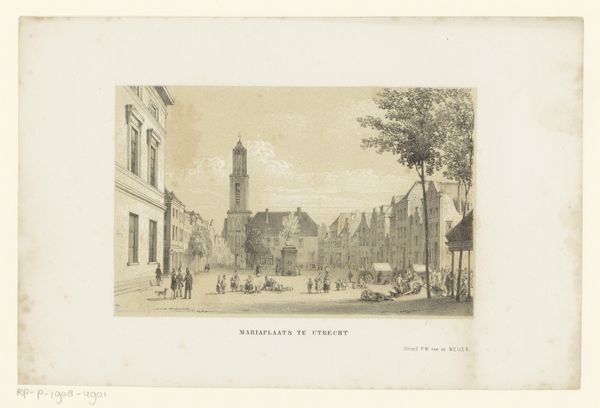
Dimensions: height 155 mm, width 240 mm
Copyright: Rijks Museum: Open Domain
Curator: So, let's immerse ourselves in this engraving, "Gezicht op de Witte Vrouwenpoort in Utrecht," or "View of the White Women's Gate in Utrecht," crafted in 1856 by Pieter Wilhelmus van de Weijer. It captures a cityscape with incredible detail. What catches your eye first? Editor: Honestly, it's the light! Or the way light is evoked through all those tiny lines. There's such a sense of gentle tranquility—the figures strolling casually, the quiet architecture. It feels less like a document and more like a memory, all hazy and soft. Curator: That’s a fascinating take. I'm drawn to the politics inherent in such seemingly tranquil scenes. Prints like these played a crucial role in shaping urban identities and civic pride. The Witte Vrouwenpoort, or White Women's Gate, wasn't just a structure, but a symbol of Utrecht. Editor: Civic pride, huh? It feels more... personal to me. The artist isn't showing us the gate so much as a feeling of being in that specific place. All those delicate lines suggesting the movement of the leaves, the stillness of the canal—it’s intimate. Like a whisper. Curator: And whispers, of course, are carefully controlled, especially when they depict the supposed glory of the Dutch city! But consider the distribution of these images. This wasn’t about intimacy; this was about mass consumption and reinforcing dominant narratives of Dutch prosperity and order. Look at how neatly arranged everything is; there’s nothing chaotic here. Editor: I guess. Still, as I look closer, those tiny human figures, they're almost incidental. It’s more about the architectural skeleton of that gate against the ever-changing backdrop of trees, sky, light... Those little human stories seem lost in the bigger play of time and place. Curator: Exactly! The human presence is minimized, domesticated, put into the place! Romanticism was about establishing authority, making sure society understands the power of place. These works are like carefully staged theater to reinforce the status quo through idyllic portrayals. Editor: A bit cynical, don’t you think? I like to imagine Van de Weijer just wanted to show what his everyday looked and felt like. It reminds me how much we forget our buildings once took the breath away. Curator: It's always more complex. On one hand it's easy to find joy simply appreciating the beautiful. But when that is paired with a historical understanding, you can see it as another type of truth telling. Thank you for sharing your insights. Editor: And thank you for sharing your knowledge of Dutch urban strategies. Together, we have shown both the beauty, and history of a building that now almost doesn't seem real.
Comments
No comments
Be the first to comment and join the conversation on the ultimate creative platform.
